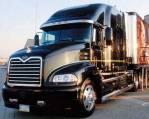Technology of the future
 Humans' first means of transport were walking and swimming.
The domestication of animals introduces a new way to lay the burden of
transport on more powerful creatures, allowing heavier loads to be hauled, or
humans to ride the animals for higher speed and duration. Inventions such as
the wheel and sled helped make animal transport more efficient through the
introduction of vehicles. Also water transport, including rowed and sailed
vessels, dates back to time immemorial, and was the only efficient way to
transport large quantities or over large distances prior to the Industrial
Revolution.
Humans' first means of transport were walking and swimming.
The domestication of animals introduces a new way to lay the burden of
transport on more powerful creatures, allowing heavier loads to be hauled, or
humans to ride the animals for higher speed and duration. Inventions such as
the wheel and sled helped make animal transport more efficient through the
introduction of vehicles. Also water transport, including rowed and sailed
vessels, dates back to time immemorial, and was the only efficient way to
transport large quantities or over large distances prior to the Industrial
Revolution.
The first forms of road transport were horses, oxen or even
humans carrying goods over dirt tracks that often followed game trails. Paved
roads were built by many early civilizations, including Mesopotamia and the
Indus Valley Civilization. The Persian and Roman empires built stone-paved
roads to allow armies to travel quickly. Deep roadbeds of crushed stone
underneath ensured that the roads kept dry. The medieval Caliphate later built
tar-paved roads. The first watercraft were canoes cut out from tree trunks. Early
water transport was accomplished with ships that were either rowed or used the
wind for propulsion, or a combination of the two. The importance of water has
led to most cities, that grew up as sites for trading, being located on rivers
or at sea, ofter at the intersection of two bodies of water. Until the
Industrial Revolution, transport remained slow and costly, and production and
consumption were located as close to each other as feasible.
Early in U.S. history, most aqueducts, bridges, canals, railroads, roads, and tunnels were owned by private joint-stock corporations. Most such transportation infrastructure came under government control in the late 19th and early 20th centuries, culminating in the nationalization of inter-city passenger rail service with the creation of Amtrak. Recently, however, a movement to privatize roads and other infrastructure has gained some ground and adherents.